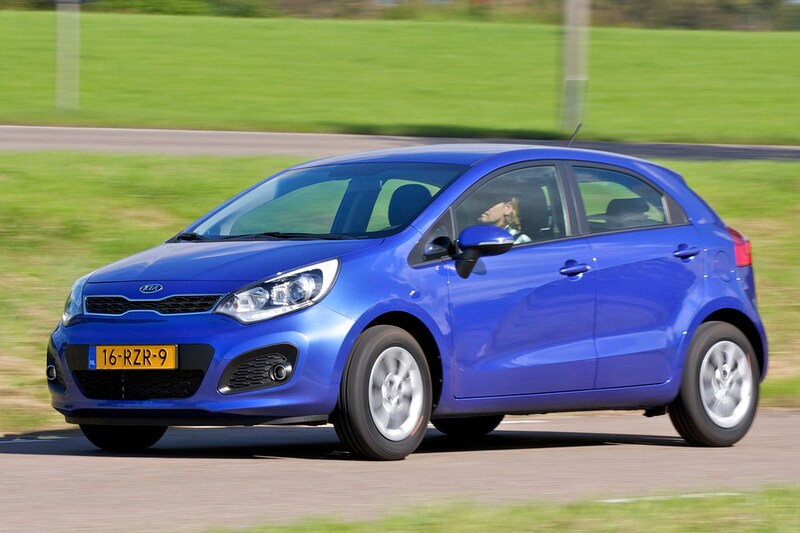How ‘eco’ is EcoDynamics?

The Kia Rio has been around since 2000, but lived a somewhat withdrawn existence until 2011. In that year, the Koreans surprised friend and foe with the new Rio, a strikingly freshly designed model of which the brand managed to sell more than 7,000 a year later. At least as striking as the design was the bright green EcoDynamics badge on the tailgate. How green was the third generation Rio really? We dive into the numbers.
The third generation Kia Rio dates back to the time when B-segmenters still had ‘just’ turbo-free four-cylinder under the hood. In the case of the Rio, this was usually the 1.2 CVVT with 85 hp. By the way, ‘CVVT’ does not mean an automatic transmission, it is an abbreviation for Continuously Variable Valve Timing. Simply Kia’s own designation for variable valve operation.
Consumption Kia Rio 1.2 CVVT
When we combine the figures of all 48 Kia Rio 1.2 CVVTs in the AutoWeek Consumption Monitor, we see an average consumption of 1 to 15.5 (6.5 l/100 km). The most favorable value is 1 in 18.2 (5.5 l/100 km), driven over a distance of more than 28,000 kilometers, in about 2.5 years. That it can also be considerably less economical with such mileage is proven by the driver who covered about 10,000 kilometers in a year. The usage? 1 in 12.3 (8.1 l/100 km).
Consumption Rio 1.1 CRDi
In addition to the 1.2 CVVT, Kia also supplied a diesel, the small 1.1 CRDi with 75 hp. Eleven drivers have entered their fuel receipts in the Consumption Monitor, with a value of 1 in 19.7 (5.2 l/100 km) below the line. The lowest value is a very neat 1 in 25.3 (3.95 l/100 km). This car was in the possession of a conscious driver, but we know that the car has been properly kicked on its tail at least once. This copy made its appearance in 2014 in the section ‘On the dynamometer’ – where it also delivered 10 percent extra power. Incidentally, the most economical diesel car drove almost 70,000 kilometers with an average of 1 in 17.7 (5.7 l / 100 km).
The third generation Kia Rio with 1.2 CVVT turns out to be no more than averagely economical. Owners of the one-generation newer Hyundai i20 (2014 – 2020) with 1.2-liter four-cylinder ‘do’ an average of 1 in 17. With the 100 hp strong i20 1.0 T-GDI turbo, owners drive an average of 1 in 15.5; the same consumption as the Kia Rio 1.2 CVVT, but with more torque and power.
.
– Thanks for information from Autoweek.nl